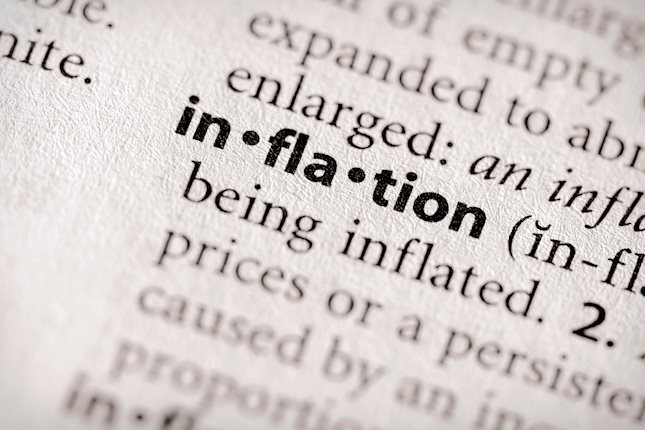Between Facebook’s weak earnings and negative guidance, a rate hike from the Bank of England and concerns about inflation from the European Central Bank, it proved to be a very lively day in the forex market. EUR and GBP soared on the back of the rate decisions with EUR/USD jumping more than a cent. Although stocks traded lower, risk currencies were in demand as the global tightening cycle fueled an appetite for yield. Thanks to a sharp rise in Treasury yields, EUR/JPY and NZD/JPY were among the day’s best performers.
Although the Bank of England raised interest rates and the European Central Bank left monetary policy unchanged, EUR outperformed GBP four-fold because the 25bp rate hike was expected from the BoE and as we wrote yesterday that some market participants hoped for a 50bp move. In some ways, the move by the BoE was more disappointing than the guidance from the ECB even though it was the first back to back BoE rate hike since 2004. Highlighting the division within the central bank, four of the nine members favored a larger move but the five member majority including Governor Bailey felt that because of weakening growth it made more sense to move in 25bp increments. They will also begin reducing the size of their bond holdings. It is clear that more rate hikes are on the way for the Bank of England but today’s vote for a more incremental move is a sign of a measured approach.
Never underestimate the power of short covering. We saw a lot of that today in EUR/USD and more could follow – 1.15 is an important level that we expect to be tested and broken. While many market participants hoped that the ECB would acknowledge the rise in price pressures, it was unclear how hawkish they would be given ECB President Lagarde’s recent comment that they don’t need to act like the Federal Reserve. But today, she opened the door to tightening by saying “inflation is likely to remain elevated for longer than previously expected….Compared with our expectations in December, risks to the inflation outlook are tilted to the upside, particularly in the near term.” Most importantly, she added “the situation has indeed changed” and she did NOT repeat that a rate hike this year is “very unlikely.” According to ECB sources, a year end rate hike is on the table. So while the ECB left policy unchanged these not so subtle changes in guidance were significant enough to renew demand for euros. The market is now pricing in as much as 50bp of tightening by December.
Looking ahead, U.S. and Canadian job reports are scheduled for release on Friday. Despite the recovery in USD/JPY and rise in Treasury yields, traders should be mindful of the risks of a weak report. The slowdown in the service sector in the month of January was due in part to weaker job growth. The employment component of ISM services dropped to 52.3 from 54.7, its weakest level since October. This follows the first drop in private sector payroll growth according to ADP since December 2004. The four week moving average of jobless claims is also higher in January than in December and the University of Michigan index fell to a decade low. Although the manufacturing sector added jobs and continuing claims declined, this won’t be enough to offset the downside risk. Economists are looking for non-farm payrolls growth to slow to 150K from 199K. A soft report may not deter the Fed from tightening in March, but it could certainly give euro bulls a stronger case to sell U.S. dollars. Here’s are the arguments for weaker vs. stronger January non-farm payrolls:
Arguments for Weaker January Non-Farm Payrolls
1. ISM Services Employment Component Declines
2. First drop in ADP Employment Change since December 2004
3. Higher 4 Week Jobless Claims Average
4. University of Michigan Consumer Sentiment Index Sinks to Decade Low
5. Lower Consumer Confidence Index
Arguments for Stronger January Non-Farm Payrolls
1. Lower Continuing Claims
2. ISM Manufacturing Employment Component Rises
3. Steady Job Cuts Reported by Challenger
Weaker job growth is also expected for Canada. The labor market has been very strong with consistent upside surprises in recent months. The Omicron scare along with renewed restrictions is expected to bring about the first month of job losses since May 2021.
Past performance is not indicative of future results. Trading forex carries a high level of risk, and may not be suitable for all investors. The high degree of leverage can work against you as well as for you. Before deciding to trade any such leveraged products you should carefully consider your investment objectives, level of experience, and risk appetite. The possibility exists that you could sustain a loss of some or all of your initial investment and therefore you should not invest money that you cannot afford to lose. You should be aware of all the risks associated with trading on margin, and seek advice from an independent financial advisor if you have any doubts.
Recommended Content
Editors’ Picks

EUR/USD trades deep in red below 1.0300 after strong US jobs report
EUR/USD stays under bearish pressure and trades below 1.0300 in the American session on Friday. The US Dollar benefits from the upbeat jobs report, which showed an increase of 256,000 in Nonfarm Payrolls, and forces the pair to stay on the back foot heading into the weekend.

GBP/USD drops toward 1.2200 on broad USD demand
GBP/USD extends its weekly slide and trades at its weakest level since November 2023 below 1.2250. The data from the US showed that Nonfarm Payrolls rose by 256,000 in December, fuelling a US Dollar rally and weighing on the pair.

Gold ignores upbeat US data, trades above $2,680
Following a drop toward $2,660 with the immediate reaction to strong US employment data for December, Gold regained its traction and climbed above $2,680. The risk-averse market atmosphere seems to be supporting XAU/USD despite renewed USD strength.

Sui bulls eyes for a new all-time high of $6.35
Sui price recovers most of its weekly losses and trades around $5.06 at the time of writing on Friday. On-chain metrics hint at a rally ahead as SUI’s long-to-short ratio reaches the highest level in over a month, and open interest is also rising.

Think ahead: Mixed inflation data
Core CPI data from the US next week could ease concerns about prolonged elevated inflation while in Central and Eastern Europe, inflation readings look set to remain high.

Best Forex Brokers with Low Spreads
VERIFIED Low spreads are crucial for reducing trading costs. Explore top Forex brokers offering competitive spreads and high leverage. Compare options for EUR/USD, GBP/USD, USD/JPY, and Gold.